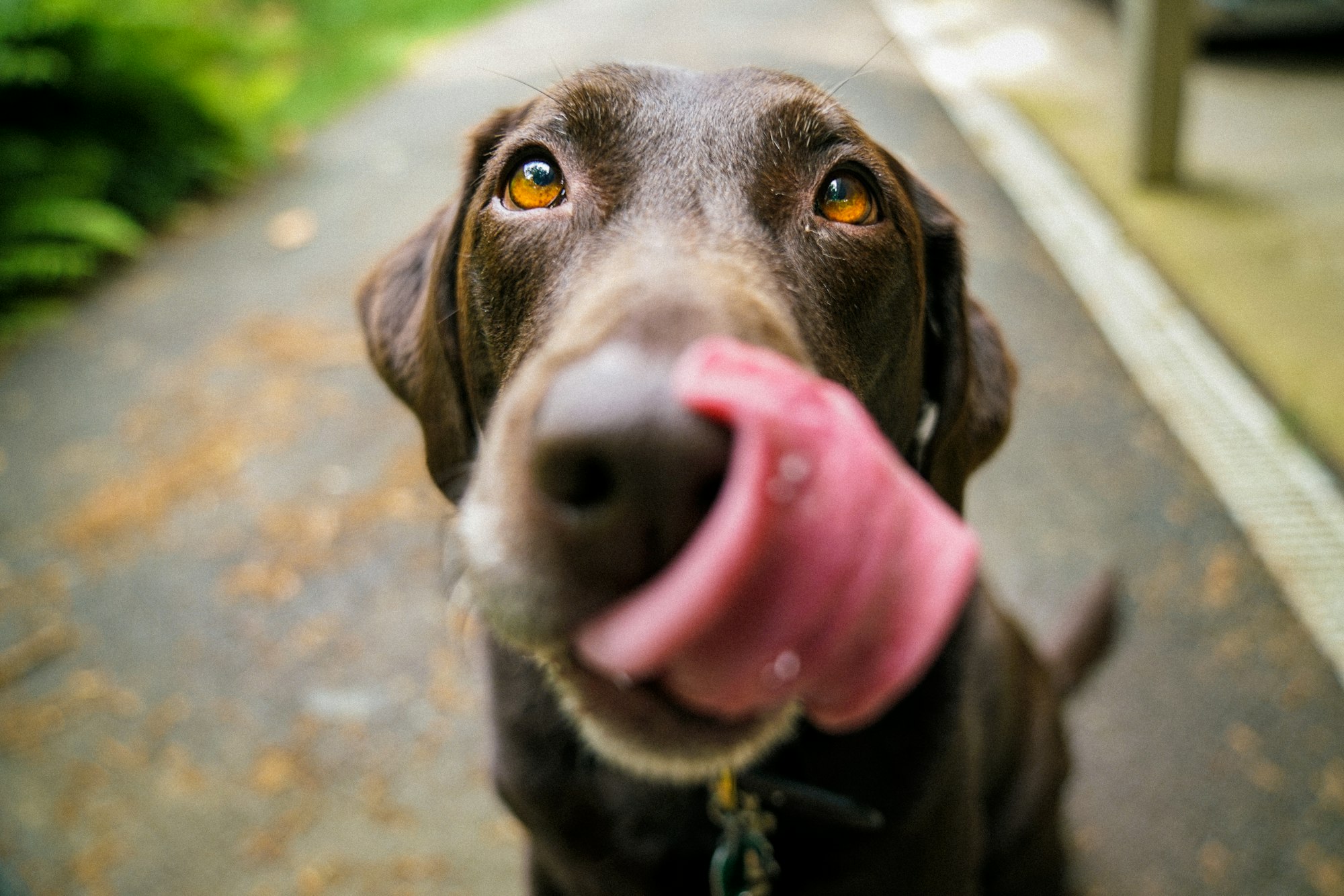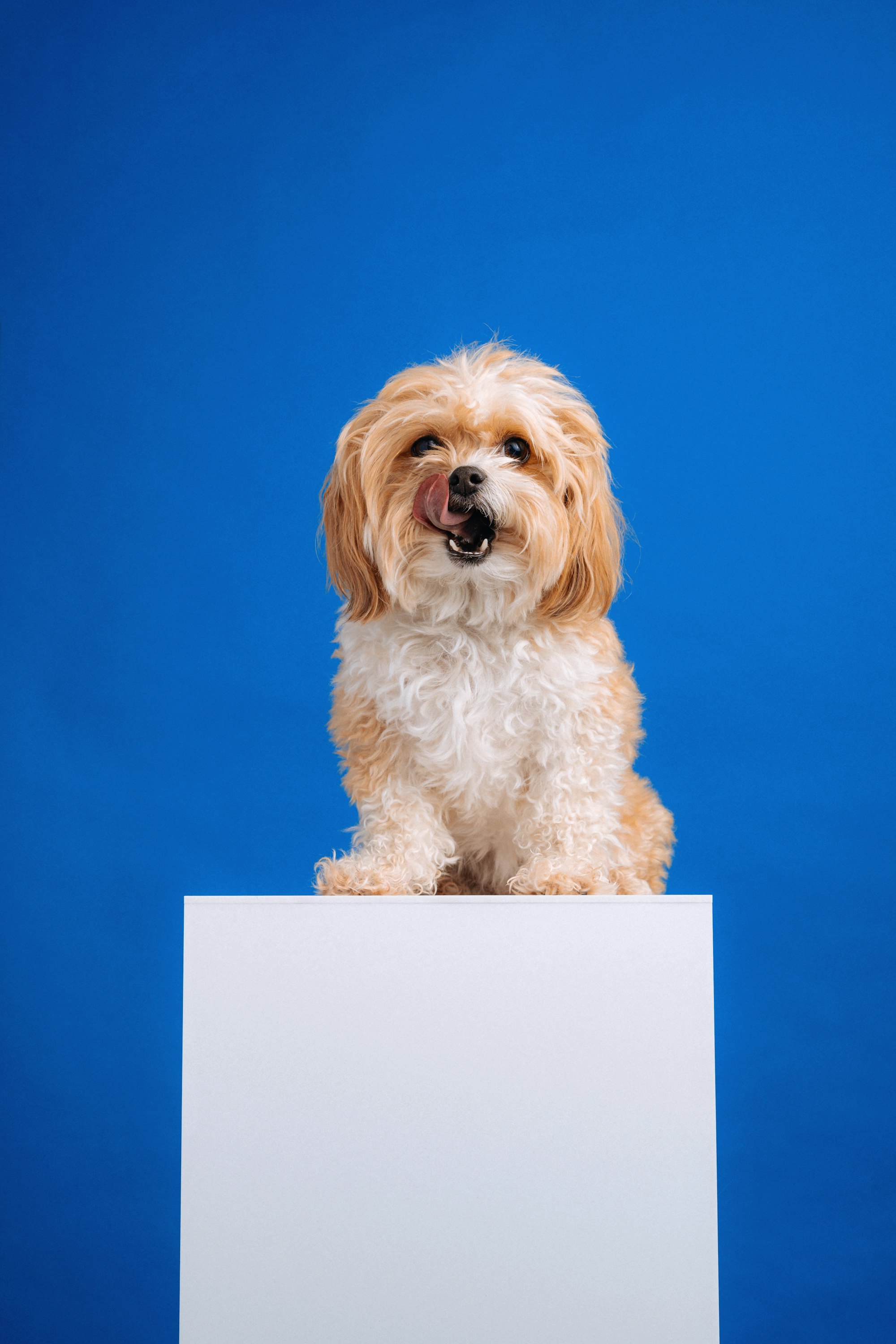Understanding your dog: why do they lick you when you pet them? It's a question that's piqued the curiosity of many pet owners. You settle down on the couch, your furry friend eagerly wagging their tail, awaiting your affectionate touch.
The moment your hand descends, a warm, moist sensation greets you - a loving lick. But what's going on in your dog's head? Why does this adorable act of licking ensue every time you pet them?
Let's embark on a journey to unravel this mystery and get to the heart of canine communication.
The Psychological Angle: Licking as a Form of Communication
Imagine a little puppy, newly born into this vast world. Their mother communicates love, care, and nourishment through gentle licks. This initial interaction instills in them a connection between licking, bonding, and comfort. It's no surprise that, as they grow, this instinctive behavior continues, forming a bridge between the canine and human worlds.
Dogs can't talk, but they sure can communicate. A lick on the hand might be their way of saying "I love you." Or it could be a request for food or a signal of submission. Yes, understanding your dog's licks requires a bit of canine psychology. But fret not; we're here to delve into this complex world together.
The Behavioral Aspect: Why Licking Feels Good
Did you know that the act of licking releases endorphins in your dog's brain? It's like a pleasurable little head massage, leading to feelings of comfort and relaxation. That's one reason why they might lick you when you pet them.
You might've inadvertently taught your dog that licking is good. Every time they lick, you smile, pet them more, or even give them a treat. Your response encourages them, and the behavior becomes a learned habit. The good news? This means you can also guide their licking habits if needed.
The Health Angle: What Licking Can Reveal
Now, before you bask in the glory of understanding your dog's licking habits, let's not ignore the possibility of underlying health issues. Sometimes, excessive licking can be a sign of something more severe, such as allergies or discomfort. It might even be related to something as trivial as their dog coat color affecting their skin sensitivity.
You see, understanding the link between how often you should visit the vet and your pet's behavior might just be the key to solving any lingering mysteries. For example, a flirt pole, a common dog toy, can sometimes cause excitement leading to more licking. Or perhaps puzzle toys might help them channel their licking behavior into something more constructive. Even assessing how much exercise your dog gets could be an essential factor in curbing or understanding their licking.

The Connection with Human Emotions
Dogs are incredible creatures with an uncanny ability to sense human emotions. Ever noticed your dog licking you more when you're feeling down or stressed? This isn't just coincidence. It might be your furry friend's way of comforting you, showing empathy, and attempting to make you feel better.
Their connection with humans goes beyond mere companionship; they understand us on a level that can be both surprising and heartwarming. Licking, in this context, becomes not just a habit but a profound means of expressing empathy and concern.
Training Considerations: Guiding Your Dog's Behavior
While understanding why your dog licks you is essential, there might be instances when you need to manage or even curtail this behavior. If it becomes excessive or occurs at inappropriate times, a combination of training techniques and tools can guide your pet.
Puzzle toys can be a particularly effective distraction. These toys provide mental stimulation, channeling your dog's licking tendencies into a productive and engaging activity. Along with regular exercise, such toys can ensure your dog's physical and mental needs are met, reducing the need for constant licking.
Remember, consistency and patience in training are key. Positive reinforcement, offering treats and praise for desired behavior, can shape your dog's actions over time. But a sudden, harsh reprimand can create confusion or fear, so approach with care and understanding.
The Bond Beyond Licks: Nurturing a Healthy Relationship
While licking is a captivating aspect of your relationship with your dog, it's just a part of the bigger picture. Building and nurturing a healthy connection involves more comprehensive considerations.
Knowing how much exercise your dog needs, understanding their diet, recognizing signs of allergies, or even the choice of a suitable flirt pole for playtime can all contribute to a deeper, healthier relationship. Regular check-ups with the vet can ensure that everything from the dog's coat color to underlying health issues is in order. Your love, time, attention, and even understanding when to pet and when to give space, contribute to this wonderful bond.
Holistic Approach: Viewing Licking within the Context of Overall Behavior
To truly understand why your dog licks you when you pet them, it's vital to see this behavior within the context of your pet's overall demeanor. Dogs communicate with a combination of signals, including barks, tail wags, body posture, and yes, licks. Seeing these actions in isolation can lead to misunderstandings, but viewing them as part of a complete behavioral picture provides a deeper insight into what your dog is trying to convey.

For instance, a lick accompanied by a wagging tail and relaxed posture may signify contentment and affection. Conversely, licking combined with tense body language might indicate anxiety or discomfort. Recognizing these subtle nuances requires observation, patience, and a willingness to learn from your canine companion.
Exploring the World: Licking as Exploration
Dogs have an incredibly sensitive sense of taste and smell. For them, licking isn't just a way to show affection or communicate; it's a tool for exploring the world around them. When your dog licks you, they might be gathering information about you, sensing where you've been, what you've touched, even what you've eaten!
This curiosity can lead them to lick various objects, people, or even other animals. While it's primarily a harmless way to gather information, always be mindful of what they might be licking, as not everything is suitable for their taste exploration.
Feeding Habits and Licking: An Unlikely Connection
An often-overlooked aspect of why dogs might lick their owners is tied to their feeding habits. Have you ever noticed that they might lick you more after a meal? Or perhaps, when they're hungry?
It's not just about food. Feeding time is an integral part of the routine and can be associated with affection, bonding, and attention. Recognizing this link can open new doors in understanding your dog's behavior and may also allow you to use feeding times as opportunities to reinforce positive habits and training.
Building Trust: A Lick at a Time
Dogs licking when petted is not just about affection; it's about trust. This behavior can be an essential indicator of how comfortable your dog is with you. Building this trust takes time, patience, and consistency in how you treat and react to your dog.
In some cases, newly adopted dogs or those who have had traumatic experiences may be hesitant to lick or even make close contact. Creating a calm environment, providing gentle affection, and allowing them to approach at their own pace can foster trust. Once established, a lick can become a sign of a profound bond of confidence between you and your pet.
Unwanted Licking: How to Gently Redirect
While many pet owners appreciate the affectionate licks of their furry friends, it might not always be desired, especially if it becomes excessive. Understanding how to gently redirect this behavior without causing stress or confusion is key.
Offering alternative activities, such as playtime with a flirt pole or engaging with puzzle toys, can be a healthy way to channel their attention. Training commands like 'sit' or 'stay' and rewarding them for obedience can also guide them away from licking without negative reinforcement.
Customized Care: Tailoring to Your Dog's Needs
Understanding why your dog licks when you pet them extends to recognizing their unique preferences and needs. Some dogs might have sensitivities or allergies that affect their behavior. Others might have specific exercise requirements based on their breed, size, or dog coat color.
By customizing your care and attention to suit your dog's unique personality and needs, you reinforce a positive relationship. Regular vet visits to assess their health, understanding how much exercise they need, and providing mental and physical stimulation aligned with their individual needs will all contribute to a happier, more content dog.
Children and Dogs: Teaching Respect and Understanding
Children and dogs often form delightful bonds, with licking being a common expression of affection. Educating children about why dogs lick and how to respond can instill respect for canine behavior.
Teaching them to recognize when a dog may want to be left alone, how to pet gently, and even how to play with appropriate toys like a flirt pole can be fun and educational. It fosters empathy, understanding, and a lifelong appreciation for animals.

Building Trust: Fi Dog Collars Enhance Security
When building trust with your dog, especially if they are new to your family or have a history of running off, security and safety are paramount. Fi dog collars come with advanced GPS tracking, allowing you to know your pet's location at any time. This technology can give both you and your dog the freedom to explore without anxiety, strengthening the bond of trust.
Customized Care: Tailoring to Your Dog's Needs with Fi
Fi dog collars aren't just about location tracking; they can provide insights into your dog's daily activities and exercise levels. By understanding how much exercise your dog is getting, you can tailor their playtime, walks, and overall care to fit their unique needs. This technology helps ensure that your dog remains healthy and content, enhancing the quality of the relationship.
Children and Dogs: Enhancing Safety with Fi Collars
Children and dogs form a unique bond, and safety is a vital aspect of that relationship. With Fi dog collars, parents can monitor their children's playtime with their pets, ensuring that they remain within a safe distance. It adds a layer of security, allowing children to enjoy their time with their furry friends without constant supervision.
Unwanted Licking: Fi Dog Collars and Behavioral Insights
Understanding unwanted behavior such as excessive licking requires a deep knowledge of your dog's daily activities, stress levels, and triggers. Fi dog collars offer a way to track your dog's behavior patterns, helping identify any irregularities or changes that might indicate stress or discomfort. This information can be vital in redirecting unwanted behaviors and promoting a healthier relationship with your pet.
Conclusion:
Understanding why your dog licks you when you pet them is a multifaceted journey that encompasses their innate instincts, sensory pleasure, emotional connection, behavioral nuances, and trust-building. Modern tools like Fi dog collars enhance this exploration, offering insights into location, exercise, and behavioral patterns.
Incorporating aspects such as puzzle toys, flirt poles, regular vet visits, recognizing allergies, and knowing the right amount of exercise all contribute to a deeper, fulfilling relationship. Cherishing this unique bond and embracing both traditional wisdom and modern technology leads to a connection with your canine companion that's both profound and rewarding.




